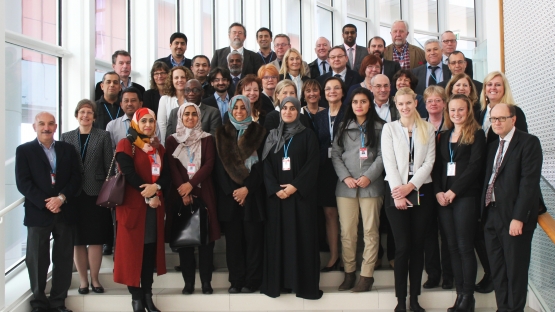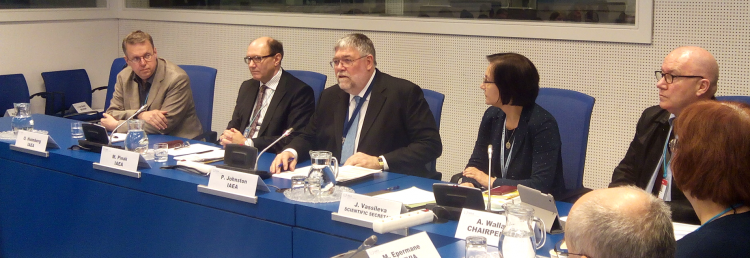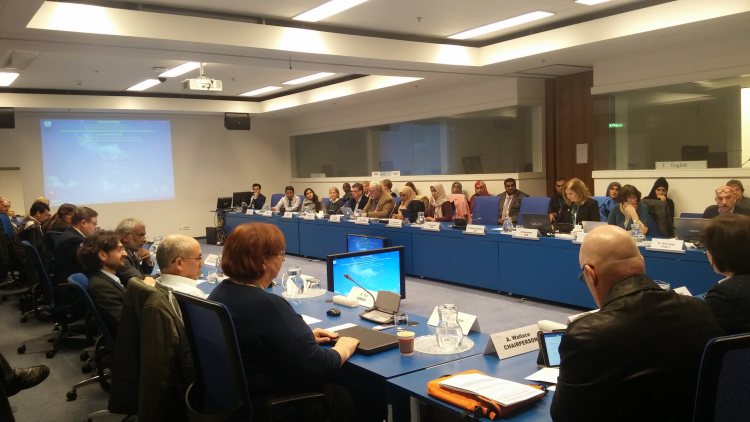From 2 to 6 November 2015, the IAEA held a Training Course on Implementation of the IAEA Safety Guide on Radiation Protection and Safety in Medical Uses of Ionizing Radiation. The objective was to present an extensive overview of the requirements of the Basic Safety Standards for the safe use of ionizing radiation in medicine and to provide recommendations and guidance on meeting these requirements by the end users in medical facilities.
More than 50 representatives of Member States participated in the meeting to discuss how medical uses of ionizing radiation should be carried out safely within the framework of the BSS, to exchange their experiences and implementation approaches and to learn from the shared good practices. These included governmental officers and inspectors from regulatory bodies, health authorities and national institutions, medical professionals and medical physicists from university hospitals and other health care institutions. Representatives of World Health Organization (WHO) and Pan American Health Organization (PAHO) were involved.
The training program was designed around the basic requirements of the International Basic Safety Standards for Radiation Protection and Safety of Radiation Sources (IAEA Safety Standards Series No. GSR Part 3). The training topics were grouped in 14 sessions, in which the invited speakers presented guidelines on how to fulfil the requirements of the BSS, in line with the recommendations provided in the draft Safety Guide on Radiation protection and Safety in Medical Uses of Ionizing Radiation, which is at an advanced stage of development by the IAEA, in cooperation with the WHO, PAHO and ILO. Then, panel discussions were planned in each session to facilitate the exchange of good practice and solutions.
In the first topical session, the roles, responsibilities and competences for radiation protection in medical uses of ionizing radiation were discussed, with a focus on how to achieve successful collaboration between Regulatory Body and Health Authority and how to involve different stakeholders: patients, referring physicians, radiological practitioners, medical physicists, radiation technologists and their professional organizations. The role of professional organisation is identified in the BSS as important for setting standards for education, training, qualifications and competence for a given specialty, setting technical standards and giving guidance on practice. The view of the contributing organizations was expressed during a panel discussion involving representatives of four professional organizations: International Organization for Medical Physics (IOMP), International Society of Radiology (ISR), International Society of Radiographers and Radiologic Technologists (ISRRT) and European Society for Therapeutic Radiology and Oncology (ESTRO). The role of management system for radiation protection and its close relation to the quality management system in making sure that standards of quality care and safety are systematically met was highlighted.
A session was dedicated to discuss the responsibilities, barriers and solutions in ensuring justification of medical exposure for patients, carers and comforters, and volunteers in biomedical research. How to protect sensitive groups by ensuring justified and optimized use of procedures with ionizing radiation was in the focus of the session on radiation protection of pregnant and breastfeeding females.
Seven sessions were dedicated for detailed discussions on how to improve radiation protection of patients, staff and public in diagnostic radiology and image guided interventional procedures, in nuclear medicine and in radiation therapy, and actions needed to prevent unintended and accidental exposure. Several powerful tools are identified in the BSS for optimization of protection, including equipment design and maintenance, quality assurance program, equipment quality control, calibration, patient dosimetry, as well as optimization of protocols for procedures, taking records and performing periodic reviews.
The level of implementation of radiation protection requirements vary among countries, and the discussion during the meeting was around how to strengthen the implementation, how to meet the requirements and fit them in with medical structures and processes and in health care pathways. The final aim was to ensure safe use of radiation in medicine with the objective of improved patient care and patient outcomes. The meeting provided recommendations to the IAEA for future actions needed to support the implementation of the BSS.




